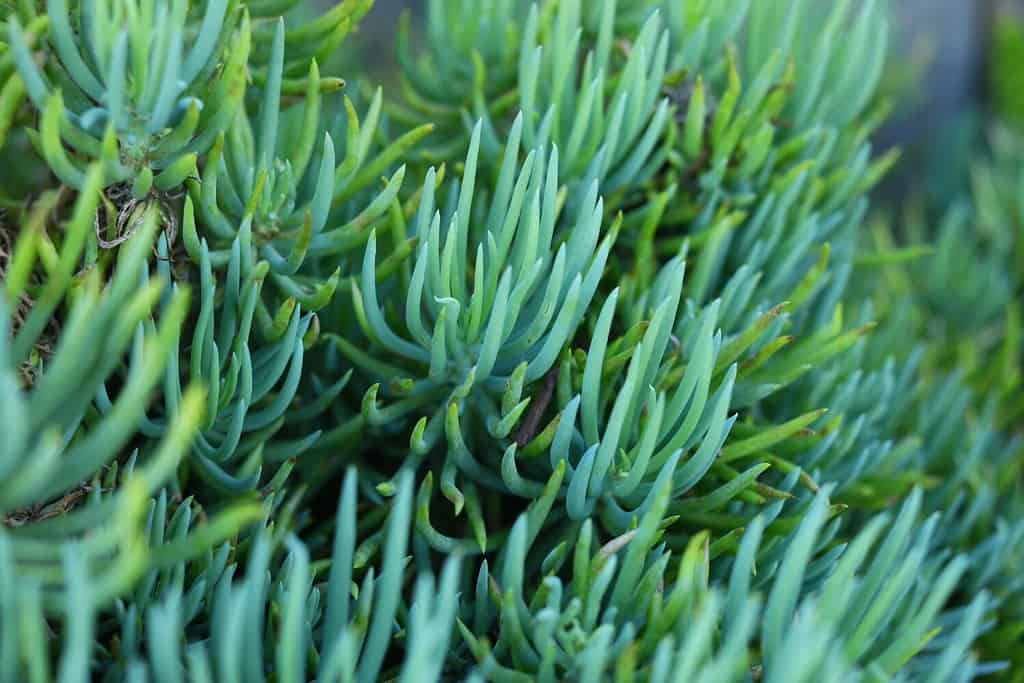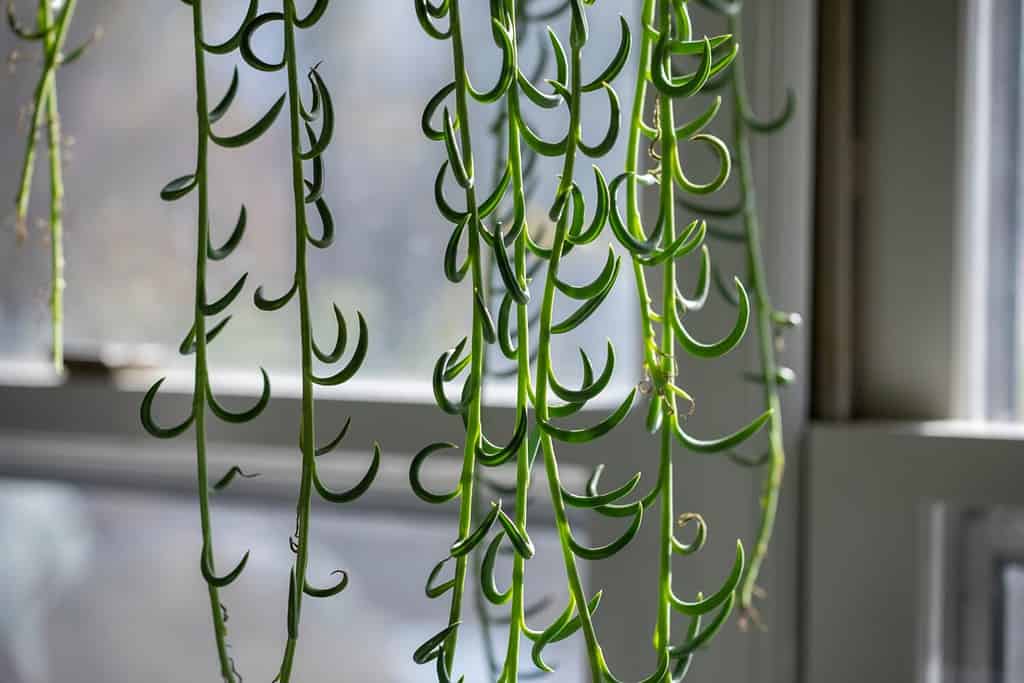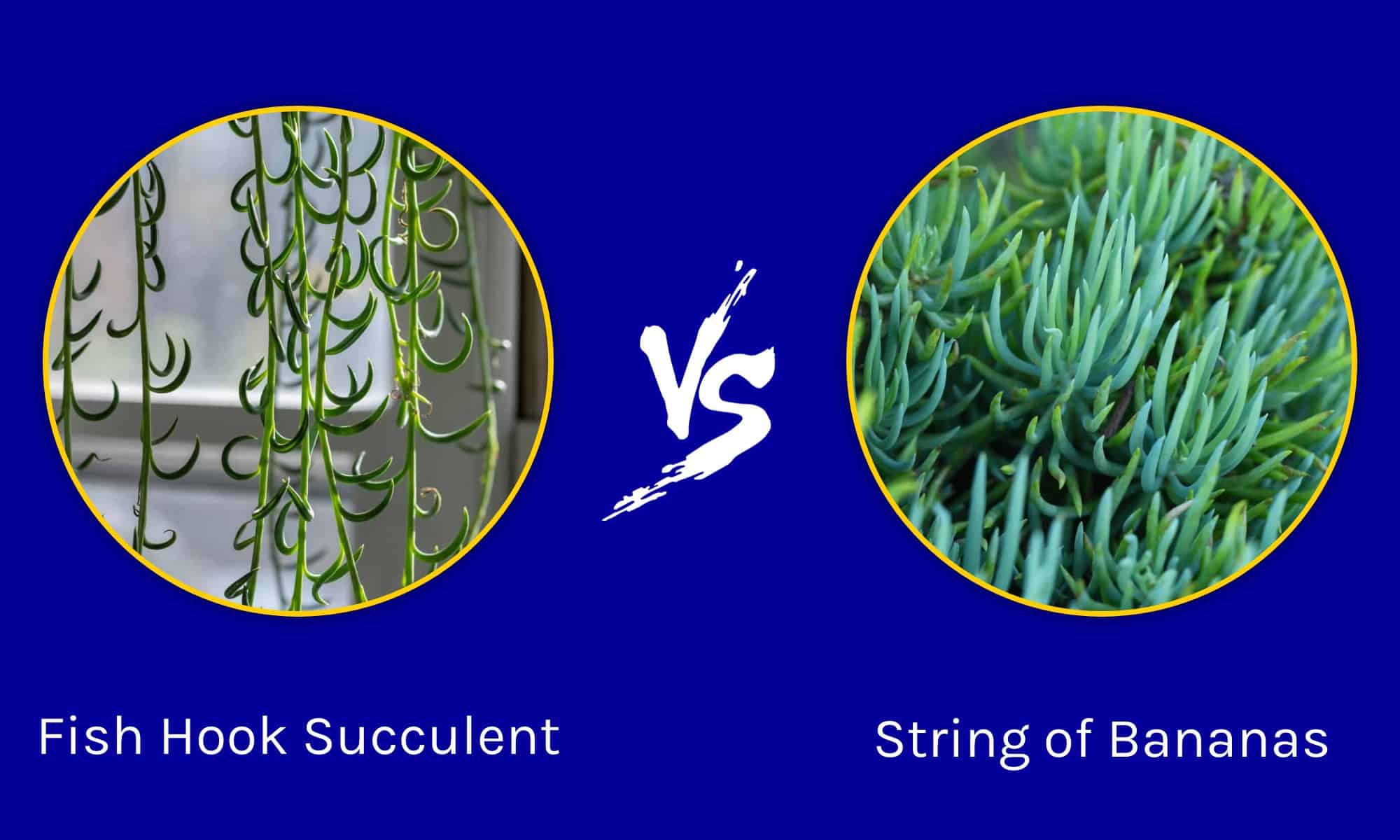Plant lovers are no strangers to trying to identify similar-looking plants, many of which share a species but have unique cultivars.
Fish hook succulents and string of bananas are two excellent examples of nearly identical plants that are often named interchangeably or mislabeled.
In this article, we’ll dive into the similarities and differences between fish hook succulent vs. string of bananas, so you know exactly what you’re getting at the plant store.
Comparing Fish Hook Succulent vs. String of Bananas:
| Fish Hook Succulent | String of Bananas | |
|---|---|---|
| Classification | Senecio radicans ‘Fish Hooks’ | Senecio radicans |
| Alternative Names | Fish hook succulent, fishhook senecio, curio radicans, string of bananas | Curio radicans, banana vine, fish hook succulent |
| Origin | South Africa | South Africa |
| Description | A succulent with wiry blue-green stems that trail several feet long with small, fleshy, thick cylindrical leaves resembling fish hooks or bananas. It produces small daisy-like flowers and grows up to 36 inches tall, but typically hands like vines from a pot. | A succulent with wiry vibrant green stems that trail several feet long with small, fleshy, narrow cylindrical leaves resembling bananas or fish hooks. It produces small daisy-like flowers and grows up to 36 inches tall, but typically hands like vines from a pot. |
| Growth Tips | Prefers well-draining soil and bright, indirect sunlight. Watering should be infrequent but thorough, allowing the soil to dry out completely. In colder months, reduce watering to once a month. | Prefers well-draining soil and bright, indirect sunlight. Watering should be infrequent but thorough, allowing the soil to dry out completely. In colder months, reduce watering to once a month. |
Fish Hook Succulent vs. String of Bananas: Key Differences
Fish hook succulents and string of bananas are the same species. Many plant sellers will use the two common names interchangeably, adding to the confusion.
Fish hook succulents are a cultivar of the species. The leaves on this succulent tend to be thicker, grow closer together, and are more upturned than string of bananas.
Fish hook succulents also tend to have bluer undertones, whereas string of bananas has a more vibrant green with yellow undertones.
As these two plants are often labeled or identified interchangeably, you can use either name for your plant. However, as many plant lovers choose the fish hook succulent for its thickness and blue tone, it’s important to see the plant and identify it before purchasing if this feature matters to you.

String of bananas is a vibrant green with yellow undertones.
©ziedonis/Shutterstock.com
Fish Hook Succulent vs. String of Bananas: Classification
Fish hook succulent and string of bananas are classified as Senecio radicans, though the proper fish hook succulent cultivar is Senecio radicans ‘Fish Hooks.’
The fish hook succulent and string of bananas are also classified as Curio radicans, which is known as a homotypic synonym. A homotypic synonym is a scientific name that refers to the same taxonomic entity (i.e., species, genus, etc.) as another scientific name.
This happens when two taxonomists unknowingly identify the same plant in different locations using two different names. Listing both classifications as homotypic synonyms ensures scientists know that the same plant is being referenced despite differences in nomenclature. You may also see these plants listed as Senecio radicans syn. Curio radicans.
Fish Hook Succulent vs. String of Bananas: Origin
Both the fish hook succulent and string of bananas originate from South Africa and Namibia. These plants grow in rocky outcroppings where the soil is shallow and windswept.
While many succulent enthusiasts grow the fish hook succulent or string of bananas in pots for a vining overflow effect, these succulents are creeping plants in their natural environment. You can typically find them spreading out over the rocks and loose soil, trying to find purchase.
Fish Hook Succulent vs. String of Bananas: Description
The fish hook succulent has wiry blue-green stems that trail up to 36″ long in ideal growth environments. They have fleshy, thick cylindrical leaves resembling fish hooks or bananas that curve upright and grow closely together along the stem. When properly cared for, the fish hook succulent produces small daisy-like flowers.
The string of bananas has wiry yellow-green stems that trail up to 36″ long in ideal growth environments. They have fleshy, thin cylindrical leaves resembling fish hooks or bananas that curve upright and grow spaced apart along the stem. When properly cared for, the string of bananas produces small daisy-like flowers.

Fish hook succulent has wiry blue-green stems that trail up to 36″ long.
©HolmesCatDog/Shutterstock.com
Fish Hook Succulent vs. String of Bananas: Growth Tips
Both the fish hook succulent and string of bananas prefer well-draining soil and bright, indirect sunlight. Use a succulent or cactus mix and place it near a bright window. Avoid direct sunlight to prevent scorching.
Watering should be infrequent but thorough, allowing the soil to dry out completely before watering again. Like many succulents, the fish hook succulent and string of bananas go into dormancy in the winter. Reduce watering during this period and avoid fertilization.
Fish hook succulents and string of bananas can be propagated via plant cuttings, though they’re challenging to nourish and root. Lay your propagated cutting on top of potting soil and mist regularly.
Thank you for reading! Have some feedback for us? Contact the AZ Animals editorial team.








